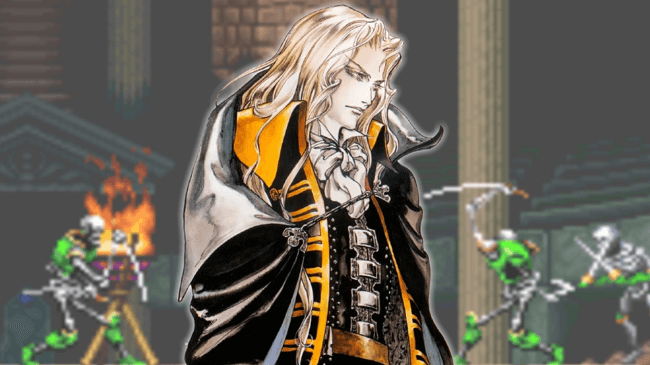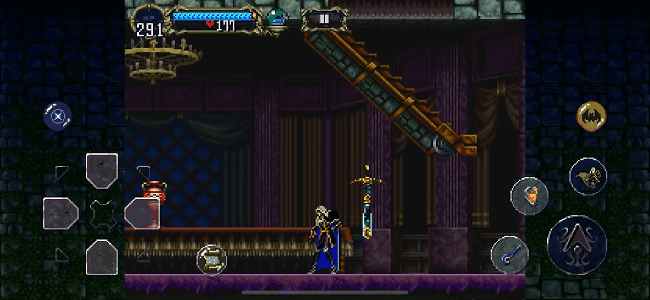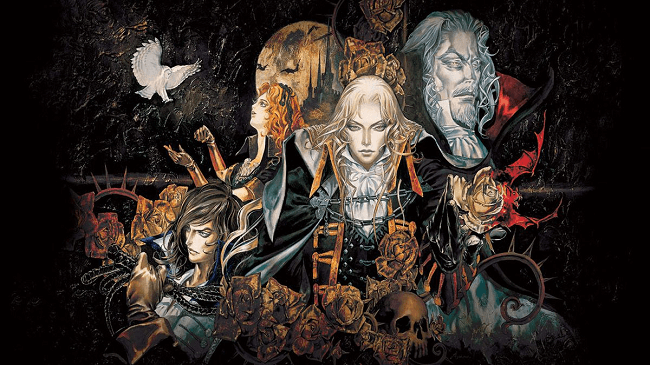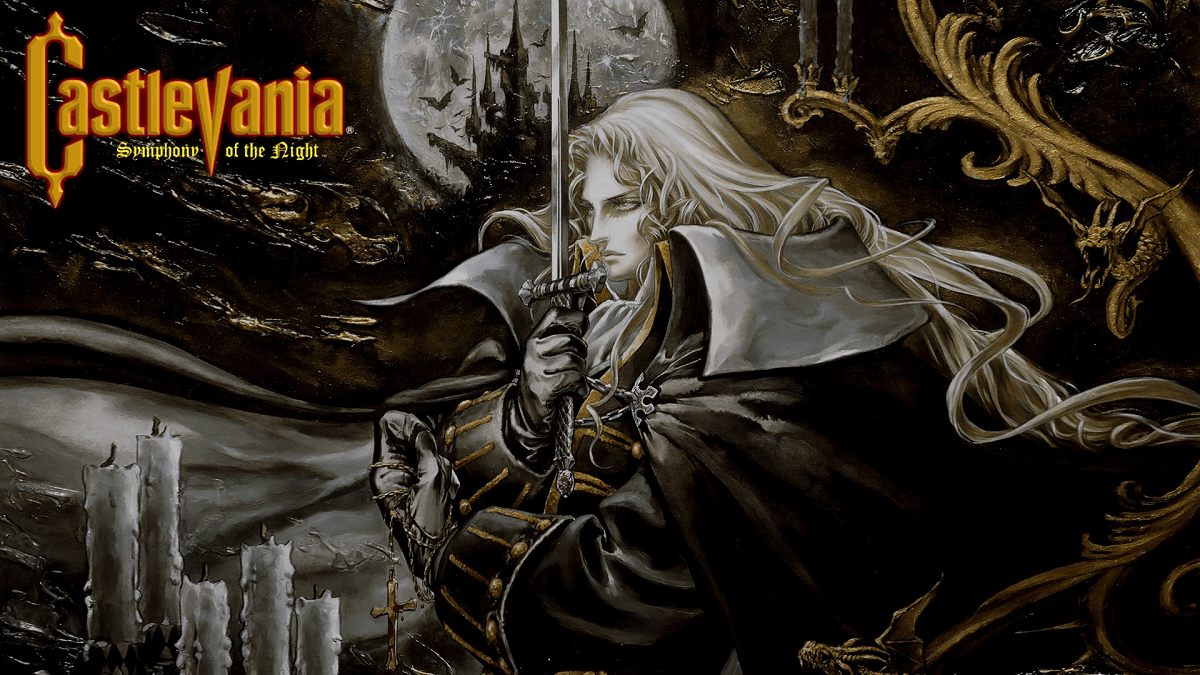Castlevania Symphony of the Night: The Ultimate Guide to Alucard’s Journey in Dracula’s Castle
Castlevania Symphony of the Night: A Deep Dive Into Akumajou Dracula X – Gekka no Yasoukyoku
Introduction
Castlevania Symphony of the Night, also known as Akumajou Dracula X: Gekka no Yasoukyoku in Japan, is one of the most iconic and beloved games in the Castlevania series. Released originally in 1997 for the Sony PlayStation, it has since become a staple in gaming history. The game, often hailed as a genre-defining masterpiece, features a unique blend of platforming, exploration, and RPG mechanics that set it apart from its predecessors. This article delves deep into the gameplay, key features, system requirements, and installation process of Castlevania: Symphony of the Night, with a particular focus on the game’s Japanese title, Akumajou Dracula X: Gekka no Yasoukyoku.

Gameplay
In Castlevania: Symphony of the Night, players take control of Alucard, the son of Dracula, as he embarks on a quest to defeat his father and rid the world of the evil vampire’s influence. The game introduces a more expansive, non-linear exploration style compared to the previous Castlevania titles. Players explore Dracula’s castle, which is filled with various enemies, puzzles, and secrets.
Unlike its predecessors, which followed a more linear path, Symphony of the Night features an open-world format. This approach allows players to venture into different areas of the castle at their own pace, acquiring new abilities, weapons, and power-ups that grant access to previously unreachable areas. The game incorporates RPG elements, such as leveling up, acquiring new equipment, and customizing Alucard’s abilities.
The combat in Symphony of the Night is fluid and responsive. Alucard’s movement and attack animations are smooth, and the game’s varied enemy design keeps combat engaging. Additionally, the game includes a host of bosses, each with unique attack patterns and weaknesses, which provides a satisfying challenge for players.

Key Features of Castlevania Symphony of the Night
- Non-Linear Exploration: One of the key features of Castlevania: Symphony of the Night is its non-linear gameplay. Players can explore the vast, interconnected world of Dracula’s castle at their own pace. This gives the game a sense of freedom and replayability that was ahead of its time.
- Role-Playing Game Elements: The introduction of RPG mechanics is a standout feature of Symphony of the Night. Players can level up Alucard, equip him with various weapons and armor, and learn new magical abilities, which adds depth to the game.
- Rich Storyline: The narrative of Symphony of the Night is dark and atmospheric. It focuses on Alucard’s internal struggle as he attempts to stop his father, Dracula, from taking over the world. The story is complemented by voice acting and a hauntingly memorable soundtrack.
- Multiple Endings: Symphony of the Night offers players the opportunity to experience different endings based on their performance throughout the game. This adds replay value and a sense of accomplishment to the experience.
- Iconic Soundtrack: The music in Castlevania: Symphony of the Night is widely regarded as one of the best video game soundtracks of all time. The composition of each track adds to the dark, gothic atmosphere and helps immerse players in the world of Dracula’s castle.

What’s New in the Game?
Castlevania: Symphony of the Night was groundbreaking at the time of its release for a variety of reasons. For the first time in the Castlevania series, the game embraced a Metroidvania style of gameplay, where the focus was on exploration, item collection, and ability-based progression. This departure from the traditional level-based structure of earlier games in the series helped redefine the Castlevania franchise and influenced countless other games in the action-adventure genre.
Another notable addition is the introduction of multiple playable characters. Players can unlock Richter Belmont, a direct descendant of Simon Belmont, in the game’s Richter Mode, adding a new layer of replayability and challenge. In Richter Mode, players experience the game with a faster-paced, more action-oriented gameplay style, providing a contrast to Alucard’s slower, more strategic approach.
Additionally, Symphony of the Night introduced a wide range of collectible items, including weapons, armor, and relics. These items could be found throughout the castle and used to enhance Alucard’s abilities, making exploration feel more rewarding.

System Requirements Of Castlevania Symphony of the Night
Although Castlevania: Symphony of the Night was originally released for PlayStation, it has since been ported to multiple platforms, including PC, Xbox, and mobile. The system requirements vary depending on the platform. Furthermore but for those looking to play the game on modern devices, the specifications are minimal:
PC Version (via Steam or Emulator)
- OS: Windows 7/8/10
- Processor: Intel Core i3 or equivalent
- Memory: 4 GB RAM
- Graphics: DirectX 9.0c compatible graphics card
- Storage: 500 MB available space
- Additional Notes: A game controller is recommended for the best experience, although keyboard controls are supported.
For those using emulators to play the PlayStation version of Akumajou Dracula X: Gekka no Yasoukyoku, you’ll need the appropriate emulator and BIOS files. Furthermore which are commonly available online.
How to Install
Installing Castlevania: Symphony of the Night is relatively easy, especially if you’re using the PC version. Here’s a step-by-step guide for installation:
For Steam:
- Visit the Steam Store: Search for Castlevania: Symphony of the Night in the Steam store.
- Purchase and Download: Buy the game and download it to your PC.
- Install: Once according to the download is complete, the installation process will begin automatically.
- Launch the Game: After installation, you can launch the game directly from your Steam library.
For Emulator (PS1 Version):
- Download an Emulator: Download a PlayStation emulator such as ePSXe.
- Obtain the Game File: Get the Akumajou Dracula X: Gekka no Yasoukyoku ISO file (legally, of course).
- Install the Emulator: Follow the installation instructions for the emulator.
- Load the Game: Open the emulator, select the ISO file, and start playing the game.
Conclusion
According to Castlevania: Symphony of the Night (Akumajou Dracula X: Gekka no Yasoukyoku) remains one of the most influential games in video game history. Its groundbreaking gameplay, captivating story, and innovative RPG elements paved the way for the Metroidvania genre. With its iconic soundtrack, unforgettable atmosphere, and rich lore, it continues to be a fan favorite. Whether you’re playing it on the original PlayStation, through an emulator, or on modern platforms, Symphony of the Night offers an unforgettable gaming experience that transcends time.
For newcomers and veterans alike, this game is a must-play, and its legacy continues to inspire new generations of gamers. If you haven’t yet experienced Castlevania: Symphony of the Night. Furthermore there’s never been a better time to dive into the dark, gothic world of Alucard and Dracula.



